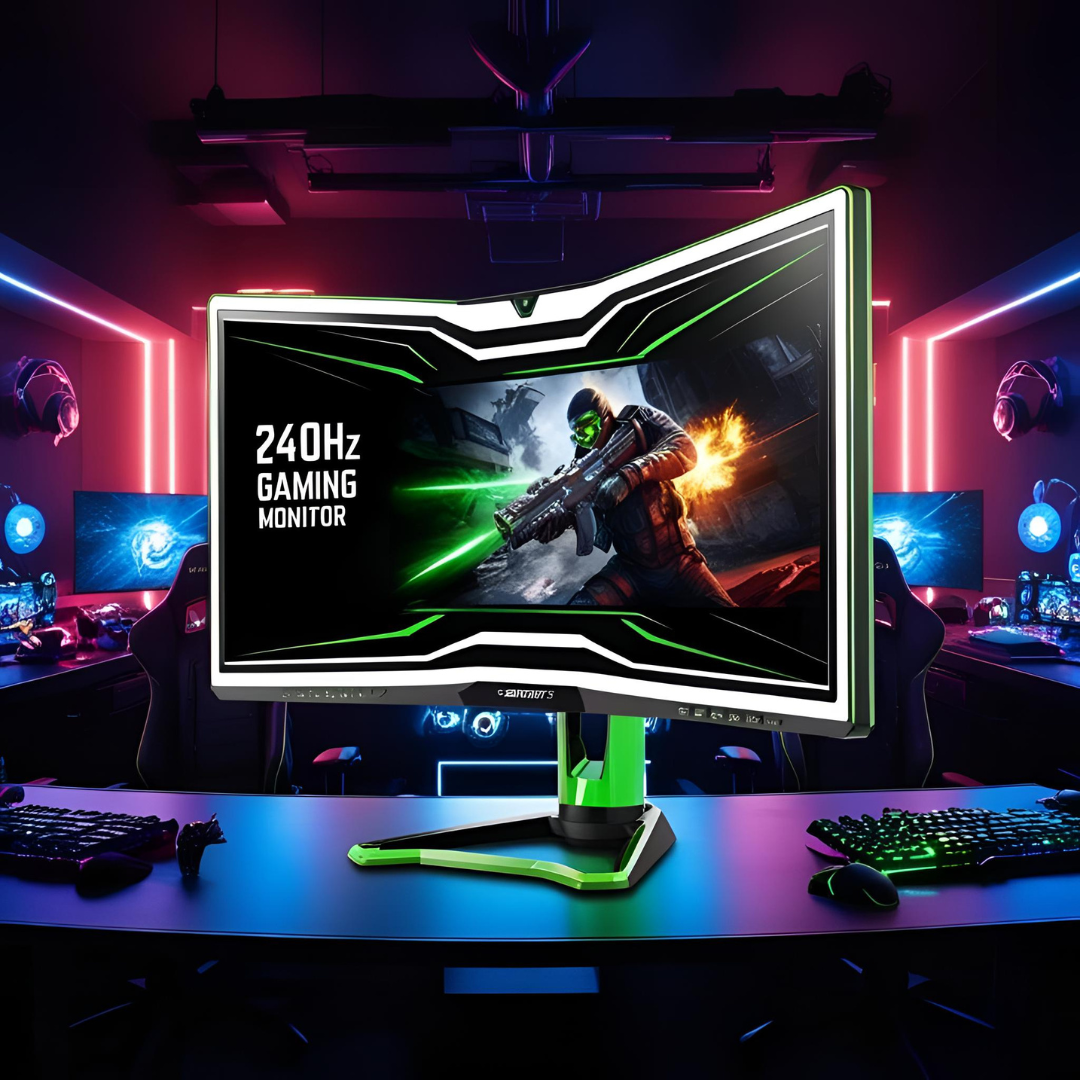If you’ve spent any time in the competitive gaming scene, you’ve probably heard people rave about 240Hz monitors. These high-refresh-rate displays are marketed as a must-have for serious gamers, especially those who play fast-paced titles like Valorant, CS2, Fortnite, and Call of Duty. But the real question is: do you really need a 240Hz monitor to compete at the highest level? Or is it more hype than help?
In this blog, we’ll break down what a 240Hz monitor does, how it impacts gameplay, and whether it’s worth the investment based on your gaming style and budget. Along the way, we’ll also compare it with other common options like a 100Hz monitor, 144Hz computer screen, or 4K curved gaming monitor to help you make an informed choice.
Understanding Refresh Rate: What Is 240Hz?
The refresh rate refers to how many times your monitor updates with new information per second. A 60Hz display refreshes 60 times per second, a 144Hz monitor refreshes 144 times per second, and so on. A 240Hz monitor refreshes the image 240 times per second — offering ultra-smooth motion and reducing visual tearing and ghosting.
This becomes especially important in competitive gaming, where even a fraction of a second can determine the outcome of a match. Faster refresh rates lead to lower input lag and smoother visuals, giving players an edge in reaction time and aiming. Compared to a 100Hz monitor or 24 inch IPS monitor, 240Hz displays are engineered for peak performance.
Does 240Hz Actually Make You a Better Gamer?
The simple answer is: it depends. Here’s a breakdown:
- High-Level Competitive Players: If you’re a pro or aspiring to compete seriously in esports, a 240Hz monitor can give you a real advantage. At high skill levels, players react and aim so fast that the fluidity offered by 240Hz helps track movement more precisely.
- Casual or Mid-Level Gamers: If you’re playing for fun or not entering competitive tournaments, the difference between 144Hz and 240Hz may not be game-changing. Most players will see a big jump from 60Hz to 144Hz, but after that, the improvements become less noticeable. A good computer screen 144Hz or 4K computer monitor 144Hz might be sufficient for a satisfying experience.
- Your System’s Capabilities: To truly benefit from 240Hz, your PC needs to consistently deliver 240+ FPS in the games you play. Without the frame rate to match, you won’t get the full experience. In that case, a 24 inch computer monitor with a lower refresh rate may be a more practical choice.
Pros of a 240Hz Monitor
- Lower Input Lag: Faster screen updates mean less delay between your actions and what you see.
- Smoother Motion: Better tracking of fast-moving targets.
- Reduced Motion Blur: Critical in shooters where spotting enemies quickly is key.
- Competitive Edge: Every millisecond counts in games like CS2 or Valorant.
Cons of a 240Hz Monitor
- Diminishing Returns: The difference between 144Hz and 240Hz isn’t as dramatic as the jump from 60Hz to 144Hz.
- Expensive: 240Hz monitors are pricier, and you might also need to upgrade your GPU.
- Hardware Dependent: Without a powerful system, you won’t hit 240 FPS consistently.
- Not All Games Benefit: Turn-based, story-driven, or casual games don’t need high refresh rates. In these cases, a curved computer screen or gaming monitor under 10000 might be ideal.
So, Do You Need It?
If you’re a competitive gamer who plays FPS or battle royale titles regularly and your PC is powerful enough to support high frame rates, a 240Hz monitor can provide a tangible advantage. Your movements feel more fluid, your aim is more responsive, and overall gameplay is more consistent. Still, a 400Hz monitor might be overkill unless you’re at the top 0.1% in esports.
However, if you’re more into single-player adventures, strategy games, or you’re on a tighter budget, sticking with a computer screen 144Hz or a 24 inch IPS monitor might be the smarter choice. It’s a sweet spot between performance and price for most gamers
Final Verdict
240Hz monitors are no gimmick — they offer real benefits, particularly in competitive gaming. But whether you need one depends on your goals, your game preferences, and your hardware. If you’re serious about climbing the esports ladder, the investment makes sense. If not, your money might be better spent upgrading your GPU, keyboard, or even your chair.
In the end, it’s all about balance — the best gear is the one that fits both your playstyle and your wallet. Whether it’s a 4K curved gaming monitor, 24 inch computer monitor, or gaming monitor under 10000, make sure your setup aligns with your gaming needs.

